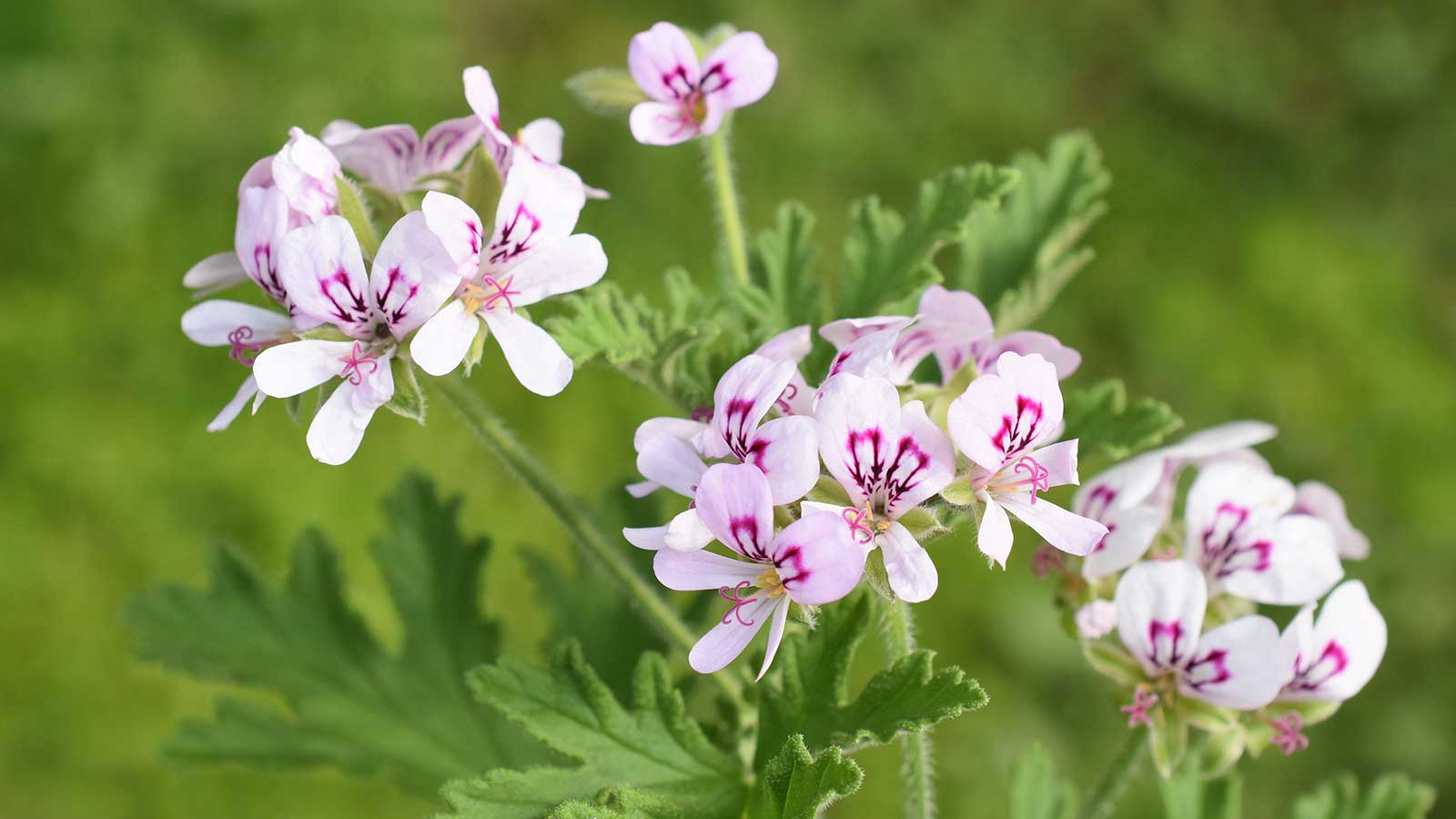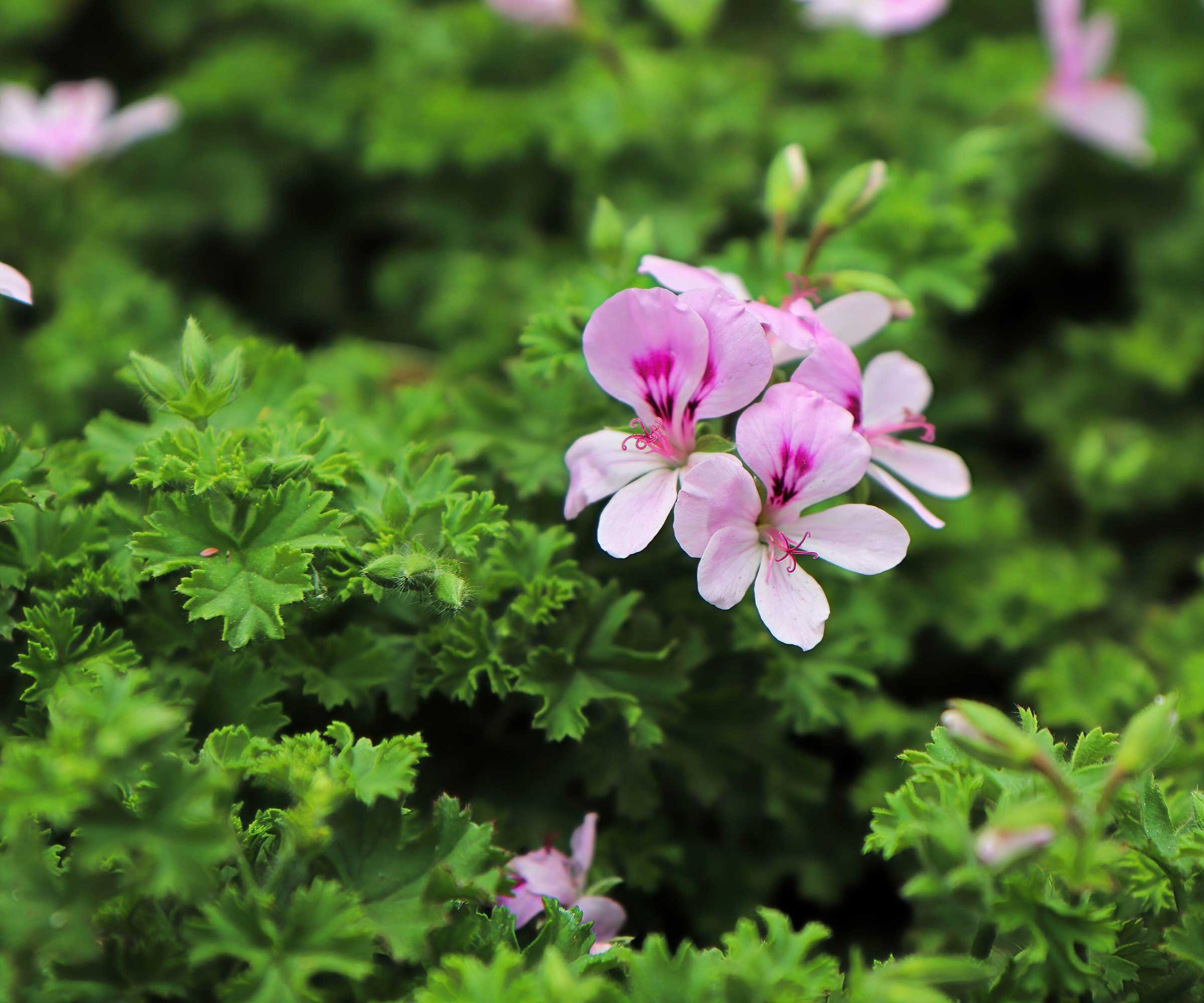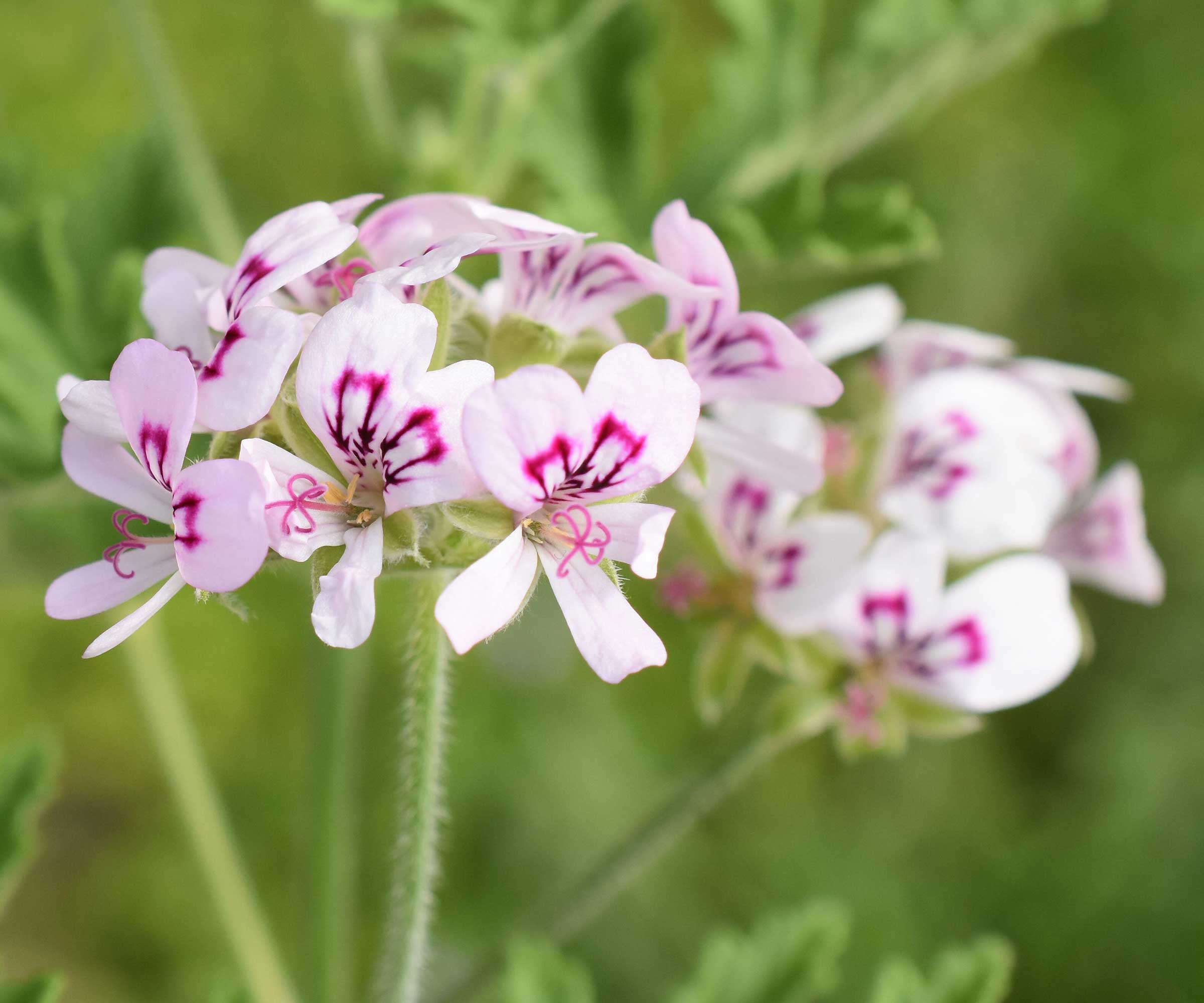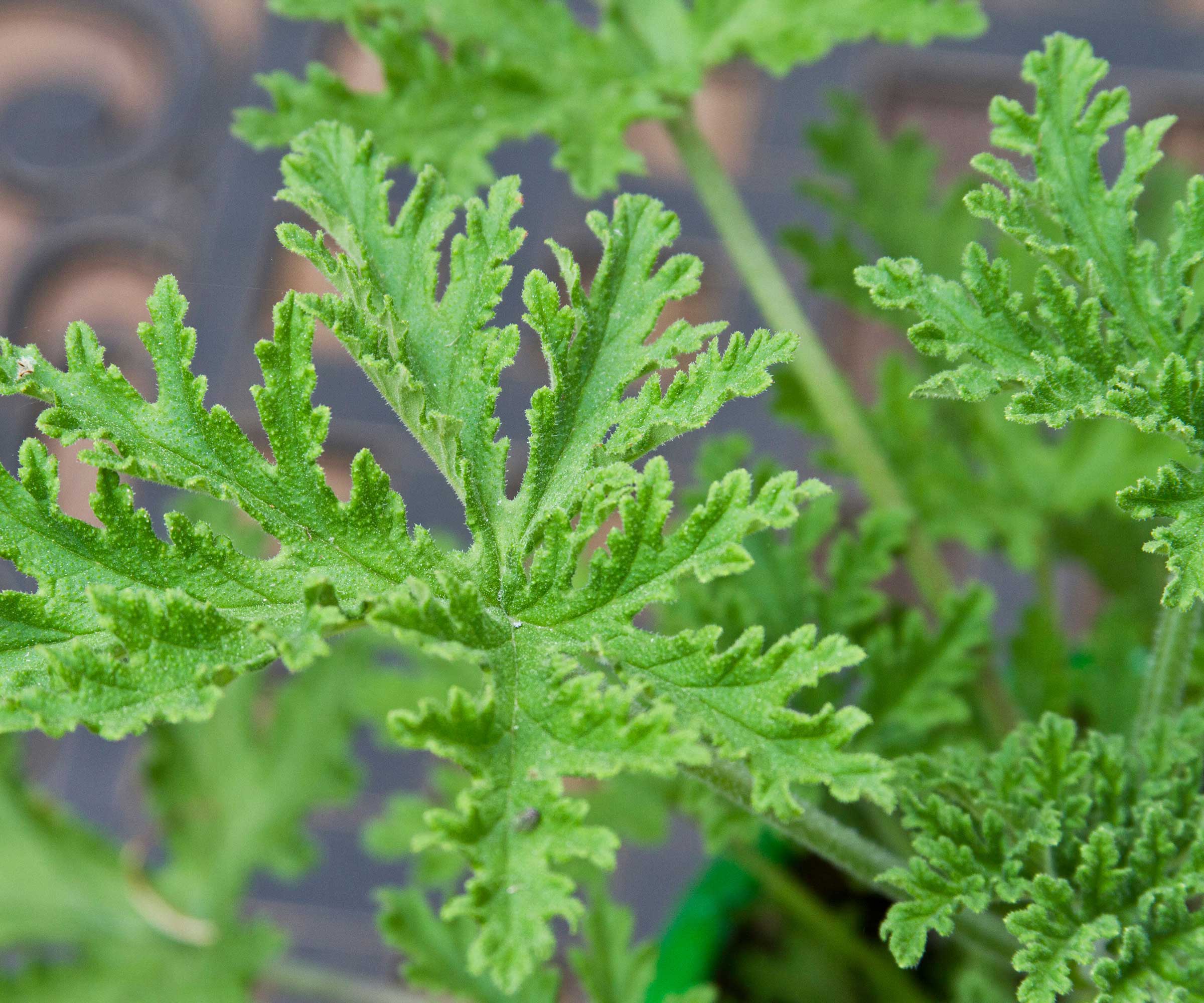
Citronella plants are a type of pelargonium – which are sometimes referred to as scented geraniums. And, like all pelargoniums, they make wonderful container plants.
Also known as Pelargonium citrosum, they have attractive, crinkled foliage, which releases a citrus-like smell when crushed. Opinions are mixed on whether citronella plants deter mosquitoes due to this scent.
Either way, the delicate pink flowers make them a worthwhile consideration for any home or patio display, particularly if you're a fan of the pelargonsjuka trend.

Expert tips on how to grow citronella
From watering tips to how much sunshine to provide, the plant pros share their advice on caring for these fragrant beauties.
Tips for growing citronella plants indoors

Citronella pelargoniums are great for brightening up a windowsill in your home, but there are a few important factors to remember to help them thrive.
Watering houseplants correctly is always essential. Kiersten Rankel, an expert from plant-care app Greg, recommends letting the soil of your citronella plant dry out between waterings, as they don't like having their feet constantly wet. 'Stick your finger about an inch into the soil, and if it feels dry, it's time for a drink,' she says.
Yellowing leaves can be a sign of overwatering, she adds. 'One yellow leaf here and there is no cause for concern, but if many leaves start to turn at once or new leaves begin to yellow, let the soil dry out a bit more between drinks and your plant should perk back up.
'They love basking in the sun, so finding the right spot is key,' Kiersten continues. 'Indoors, place them near your sunniest window – a south-facing one is ideal. If you're blessed with tons of natural light, an east- or west-facing window will also do the trick.'
In terms of the best soil to use, Kiersten says a well-draining potting mix is perfect. 'You can even mix in some perlite or coarse sand to improve drainage,' she adds. You can shop for organic perlite from Perfect Plants Nursery.
Note: Citronella pelargoniums are not pet-safe houseplants, so bear this in mind when styling them in your home.
Tips for growing citronella plants outdoors

Citronella are charming options for patio pots, but it's essential to remember they are tender plants. This means, depending on your hardiness zone, you may need to overwinter these pelargoniums indoors. Jessica Mercer of Plant Addicts says, 'In areas with frost, they should be brought indoors when nighttime temperatures reach 45º Fahrenheit.
'In too much shade, citronella can grow leggy as it stretches for more light,' Jessica continues. She says they will grow best with at least six hours of direct sunlight. However, they will appreciate protection from hot afternoon sun, she adds – especially in southern climates.
Kiersten recommends making sure their pots have drainage holes. You don't want the plants to be sitting in a puddle after it rains, she adds.
'Keep an eye out for any munched-on leaves, as pesky critters like aphids and whiteflies love to snack on them,' Kiersten continues. She recommends giving them a quick blast with the hose or using an insecticidal soap to tackle them. The Garden Safe insecticidal soap from Amazon is a well-rated option, and comes as a ready-to-use spray.
FAQs
Should you prune citronella plants?
Kiersten says, whether you're growing your citronella plants indoors or out, a bit of regular pruning will keep them looking their best. 'Pinch off any dead or yellowing leaves, and give them a gentle trim to encourage bushier growth.'
It's also worth deadheading pelargoniums, to promote more blooms.
What is citronella grass?
Citronella grasses (Cymbopogon nardus and Cymbopogon winterianus), are large, tropical, perennial types of grasses which contain citronella oil. This is used in types of mosquito repellents, such as citronella candles.
Looking for more aromatic plants to make a patio or balcony smell nice? There are lots of gorgeous fragrant flowers perfect for upping the ambiance of an outdoor space.







